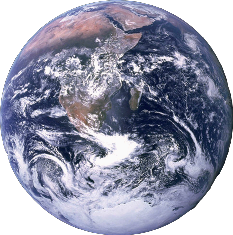 Going to the answer....
Going to the answer....
I was intending to get to this much later on in the series of posts. After reflecting on the initial comments where I keep promising more posts but not giving much away, I think I'm in danger of frustrating you patient readers. So here it is.
Future Posts....
I'm intending to take this down to one more level of detail over the next few weeks.
Intended way of working....
If you subscribe you will be automatically notified of each post. By the time you read the notification the original post may well have been adapted in response to early comments so do go to the site itself. By clicking on the title of each post (or its link in the table of contents on the right hand side of the home page) it will appear on a separate page with any comments flowing from underneath the main body of the post.
Your comments....
are invaluable to me at this stage - I'm simply testing out something, which I have introduced to others in private and public meetings, and may be helpful to Mankind. What I do know for certain is that it will be wrong, but with your help it may improve sufficiently to be of use. It would be most helpful to the writer and other contributors if you placed your comments under the most relevant post.
The Framework Diagram....
- A delicate and isolated ecosystem....
Before looking at the square, please consider the first picture on this blog, of the earth, viewed from space on the last ever Apollo Mission. It shows that in cosmological terms our earth is minute. Most life takes place on the surface of this minute orb and extends a few 100s of metres above and below its surface. This biosphere is no more than a film on a tiny planet and extremely delicate. It is in constant movement and supports various cyclical processes which are highly balanced and interrelated. - The carbon cycle is life's provider....
The framework is centred on a renewed understanding of the carbon cycle, which many met at GCSE or O-level sciences. Organisms on the photosynthesis side of the carbon cycle consume CO2 and in so doing provide the living world with most of its nutriment. The living world, in turn, consumes that nutriment, during respiration, and returns the CO2 into the atmosphere. As I will demonstrate in my next, more detailed post, mankind, in its recent proliferation of the earth's surface has found carbon-bearing fuel outside the biosphere to meet its energy needs. In burning these fuels the carbon cycle is no longer in balance. This is leading to the biosphere increasing in overall temperature due to the greenhouse effect. - Man needs energy to survive....
The framework acknowledges that mankind needs sources of energy to exist, but recognises that Mankind might well be profligate in their use. Using carbon bearing fossil fuels is already disrupting the balance in the biosphere upon which life depends. - The ownership of energy production bestows enormous power on the few....
The framework recognises that energy production is part of very powerful economic and political system which is difficult to influence. This enormous power however is recognised by many potentially our saviour. - What do we really want and what is the wise thing to do...?
The framework recognises finally that all this energy fuelled activity is dedicated to what we really want - our desires and aspirations. What those are? Whether they are sustainable? Whether they should be sustainable? are all fundamental philosophical questions for us all. These large questions can appear daunting and too big to handle, but can be made highly practical. It is only then that members of Mankind - that's you and me, can make a difference.
The next post therefore will be on the carbon cycle, the very centre of ther framework....


2 comments:
Hi Jeremy
I hadn't appreciated before what the carbon cycle really is ... there's a certain amount of carbon in the biosphere, which is changed into different forms by living organisms. Man extracts more carbon from the earth and puts that into the biosphere ...
Thanks for that.
Thanks for the thanks, but it is your contributions that keep this blog going and also make me work harder.
Yes, that's the basis of the story. During the earth's history, there have evidently been highly significant events, which have changed the balance and had shortish term catastrophic effects. Climate scientists have borrowed the term 'singularities' from cosmologists to describe these.
Because they are events, rather than trends, their effects are very acute but shortlived.
One example of such a singularity is likely to have enfolded a large chunk of biomass and placed it underground. That would not have been very pleasant for the biomass at the time, but the biosphere adapted to the effect, and a large chunk of carbon was effectively taken out of circulation, until now.
Meanwhie it got hot and partially decomposed (pyrolysis) and became what we now prospect for as fossil fuel.
What mankind could now be accused of doing is causing its own singularity by rapidly reintroducing all that carbon back into the cycle. If we could only recognise that we are digging up something which is actually a devastating pollutant. The ironies are extraordinary.
My next post will take this a little further and hopefully make it clearer.
Post a Comment